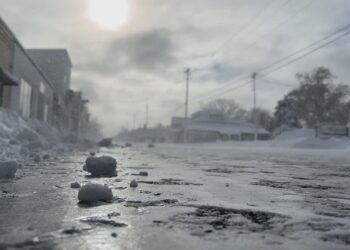You’ve heard the old adage, “It’s not the heat, it’s the humidity”? That’s a summertime truth! It’s the humidity that makes the air feel uncomfortable, and it’s also the humidity, or water content in the air, that fuels heavy rainstorms.
Dew point is the direct measure of how much water vapor is in the air. It’s the temperature at which air becomes saturated and produces dew.
Much of the time, summertime dew points in the U.P. are in the “comfortable” 55° to 60° range, but we do get periods of humidity where the air can feel oppressive.
A chart (seen in the above video) shows a rough depiction of how much water is in the air at 50% relative humidity with a temperature at 50°, 75°, and 95°. Obviously, there is much more water vapor available in the warmer air mass– that’s why our heaviest rain events occur during the warm season.
At the National Weather Service, the heaviest one-day rain of 4.29″ occurred just after Labor Day in 2007. On June 20, 1878, thunderstorms produced a record one-day rain of 5.16″ in Marquette. We’ve previously mentioned the 5.96″ that poured down in Houghton-Hancock on Father’s Day 2018. The ensuing flooding devastated area infrastructure.
The far west end is most prone to extreme rain events. Ironwood received 6.7″ of rain on July 17, 1942. That’s just under the all-time record there of 6.72″ received on July 21, 1909. By the way, the next day, July 22, 1909, another five inches came down!
Just seven years ago on July 11, 2016, heavy thunderstorms blasted the Gogebic County area. While Ironwood received a one-day total of 2.59″, up to a food of rain fell outside of town washing out roads and bridges near Little Girls Point.

















